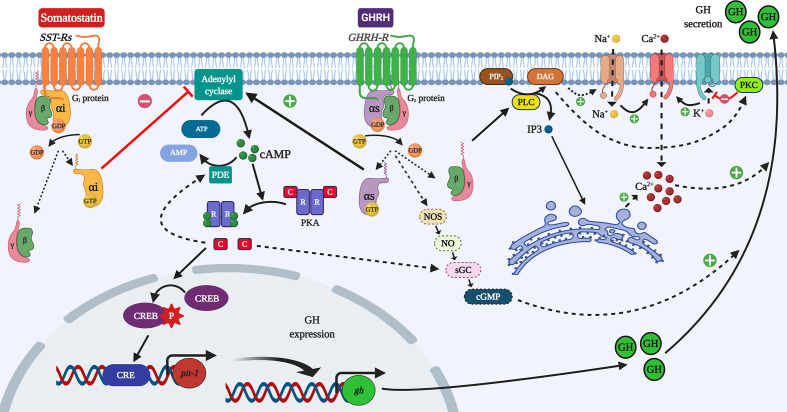Figure 2.
Simplified overview of the cAMP/PKA/CREB pathway in the control of GH synthesis and secretion in somatotrophs. The modulation of GH synthesis starts with the activation of GPCRs and the control of the activity of the adenylyl cyclase (AC) enzyme by the action of either stimulatory Gα (Gαs) or inhibitory (Gαi) subunits. The activation of AC increases cAMP levels, which activates the protein kinase A (PKA). CREB is one of its targets, and phosphorylated CREB can stimulate the expression of the transcription factor pit–1, which upregulates GH mRNAs. The stimulation of phosphodiesterases (PDE) by PKA could elicit a negative feedback, limiting cAMP levels. The activation of adenylyl cyclase and the protein lipase C (PLC) induced by GHRH causes the rise in either cAMP or IP3, respectively, stimulating the calcium (Ca2+) influx, which in turn potentiates the exocytosis and release of GH. This mechanism involves the activation of Na+ channels to depolarize the plasma membrane to regulate Ca2+ influx by Ca2+–channels, and the mobilization of Ca2+ from the endoplasmic reticulum. It was reported that cGMP could stimulate GH release independently of cAMP. Otherwise, the limitation of cAMP levels and the activation of K+ channels reduce the secretion of GH. Figure created with BioRender.com tools.

